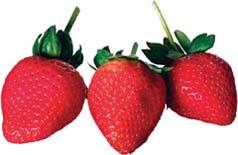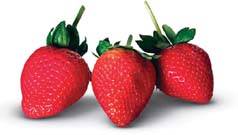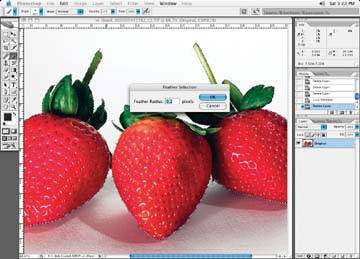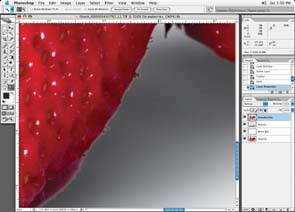Having said that though, one must pay special attention to the shape, size, and density of the shadow, as such a simple shadow on a stark background will look really out of place if it isn't correct. Using some basic techniques, we can give these strawberries a realistic shadow, as revealed in Figure 2-10.
Figure 2-9. Before: Shadowless strawberries in space

Figure 2-10. After: Strawberries with the proper shadow

Isolating the Image
To start, we'll need to isolate the image of the strawberries. If the image is being removed from a background and put on a white or tinted background, I usually crop the image with the pen tool. As you can see in Figure 2-11, I usually add a small amount of softness to the pen tool selection (Select » Feather), depending on what the rest of the image looks like. In this case, I've added a Feather Radius of 0.2.
Figure 2-11. Use the Feather command to add softness to an image when selecting

It is very important to make sure that when an object is close-cropped out of an existing background, you take special note of the original softness of the image. If you crop an image out without any softness at all, the edge of the cropped image will look like it has been cut out with a knife and simply stuck down on the new background.
A good rule of thumb for determining the correct softness is to have a look at the original image, zoom in to a large degree, and see how the pixels of the image feather off into the background. Although this is not all that measurable in terms of an exact measurement, it will give you a visual cue as to the amount of softness you should add. Adding softness is a very visual thing, and to use the exact amount each time may not work for all images. You'll have to experiment. It is not unusual for me to make more than a couple of attempts before I figure out exactly where I want the softness setting to be.
You do not want to get " jaggies" on the edges of a newly cropped imageor have it be too soft in a sharp setting, or conversely, have it too sharp in a soft settingso make sure that your cropping softness accurately reflects the rest of your destination image.
Note that adding softness to the image may add a small "halo" around the edges of the image, particularly around the darkest areas. When a dark shadow is added, there may be an edge between the shadow and the cup, as you can see in Figure 2-12. You may have to edit this later.
Figure 2-12. Note the halo effect around the edge of the strawberries
